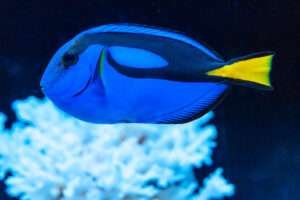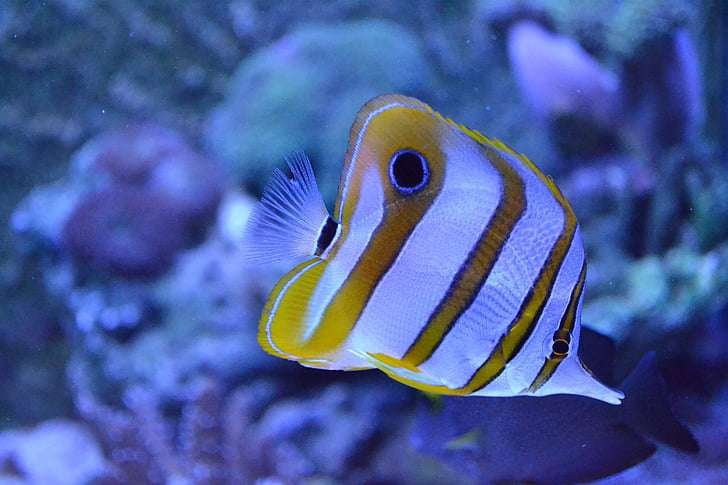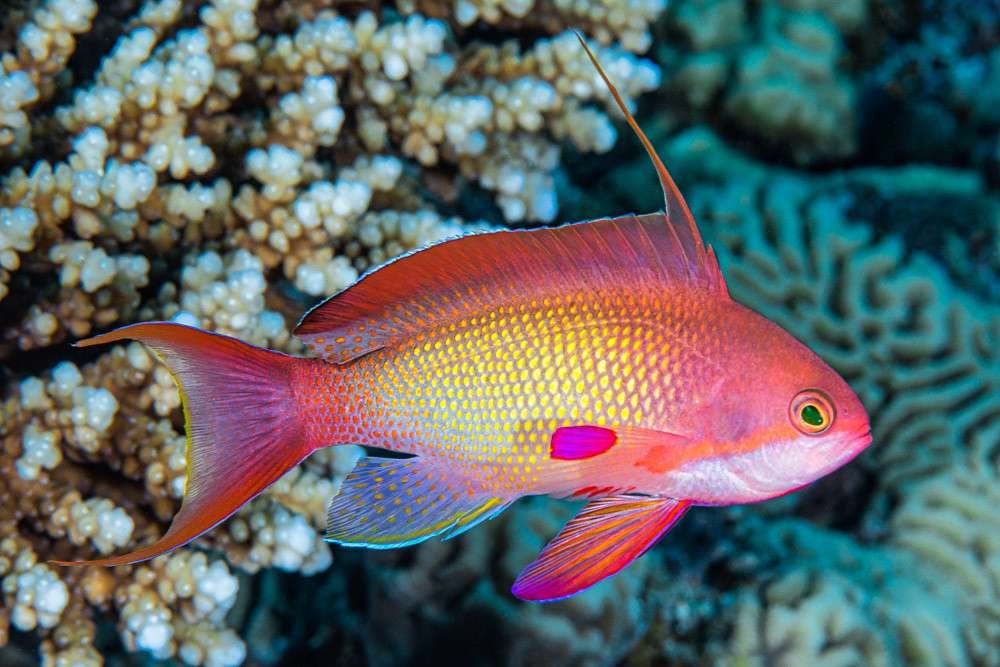Blue Tang Fish

Small fish called blue tangs live on coral islands in the Indo-Pacific. Their bright royal blue and canary yellow colors make them stand out. But you shouldn’t count on their color schemes as much as you might. Blue tang juveniles are bright yellow, but when they are stressed, older fish will show deeper blues and violets.
Even though they look innocent, blue tangs can be dangerous if they feel threatened. On each side of their tails are very sharp, poisonous spines that they can raise to scare off enemies.
Also, keep in mind that eating blue tangs can cause ciguatera poisoning, a very bad illness that comes from eating certain foods. Dinoflagellates, which the tangs may eat in big amounts, contain toxins that make them sick. If you eat too much ciguatera, you might vomit, have diarrhea, and feel dizzy.
Mixed up names
People often call the blue tang the palette surgeonfish, the regal blue tang, the hippo tang, the flagtail surgeonfish, the royal blue tang, the Pacific regal blue tang, and the blue surgeonfish. A different type of fish, Acanthurus leucosternon, can also be called a blue tang. It can be told apart from other blue tangs by its black face. Another type of blue tang lives in the Atlantic Ocean. This is why scientists use Latin for their names. Paracanthurus hepatus is the only species of this fish species. There are many blue tangs.
Habitat and Food
You can find blue tangs in the clear water around coral reefs all the way from American Samoa to the eastern coast of Africa in the Pacific and Indian Oceans.
The fish in this group eat both plants and animals, with algae making up the majority of their food. They scrape algae off the coral reef with their small, sharp teeth. This is a very important job because the fish keep the environment healthy by stopping algae from growing too much. Too much algae can kill coral and mess up the whole food chain.
Possible dangers to life
The International Union for Conservation of Nature (IUCN) says that the blue tang is a species of least concern, but the tank trade is said to be having an effect on it. Before 2016, blue tangs could only be caught in the wild because there was no known way to breed them in a tank. This could mean that every year, up to two hundred thousand blue tangs are taken from the reefs where they live. Also, people often use squirt bottles filled with cyanide to catch wild reef fish, like blue tangs. This can hurt the fish and other animals nearby.
Blue tangs also live in coral reefs that are in danger because of things like ocean acidification and coral bleaching, which could mean that the fish loses its home.
Save the World
Shannon Switzer Swanson, who was given a grant by National Geographic, has been keeping records on the trade in blue tangs and other wild-caught saltwater fish for tanks. She is also studying the fishing groups in Indonesia that are involved in the trade to learn more about them. If people can figure out how to breed blue tangs in captivity, they might not have to be caught in the wild as often. It will take some time, though, before those results can be used on a larger scale to meet the high demand for this species among aquarium keepers.


